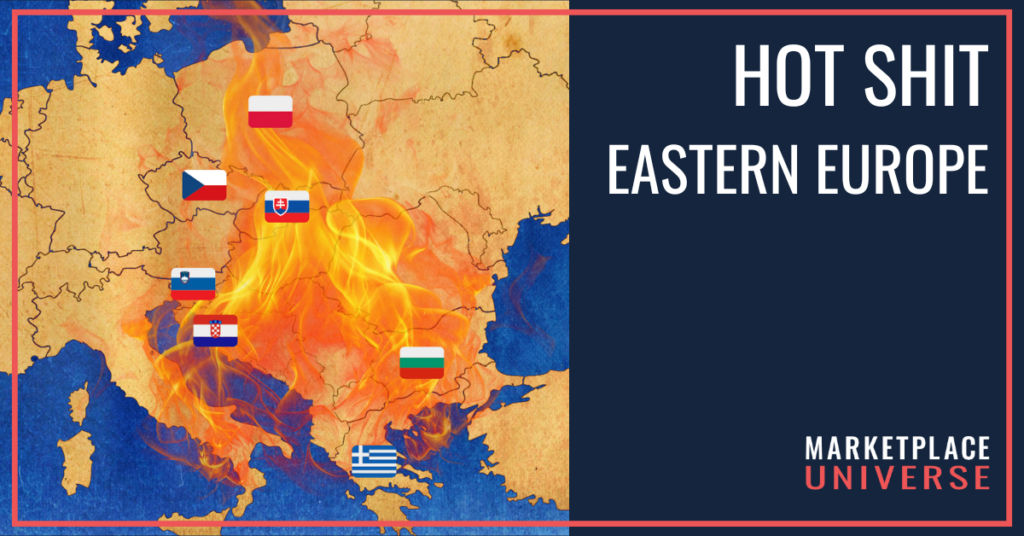
Since 2022/23, the stagnating German market with its recession-induced thrifty consumers has only been fun to a limited extent, which is why brands and retailers are increasingly looking beyond Germany. In our sights: The Hot Shit CEE market.
Attractive growth rates
And preferably to Central Eastern Europe, also known as CEE market, where, according to the ECDB, attractive growth rates are expected for the e-commerce sector in 2024. For example in Poland with an increase of almost 12%, Romania with an increase of 9%, the Czech Republic with an increase of 10%, Slovakia with an increase of 9%, Hungary with an increase of 11% and Greece with an increase of 13%. In short: Really hot shit, this CEE market.
In addition, the platform landscape in Eastern Europe is currently very dynamic. A few recent reports:
- Kaufland e-commerce is continuing its expansion into Eastern Europe after entering the Czech Republic and Slovakia last year with its launch in Poland this year.
- Polish market leader Allegro recently launched its marketplace in the Czech Republic and Slovakia.
- eMAG, the leading marketplace in Romania, Hungary and Bulgaria, is aggressively looking for Western European retailers and interface providers to connect to eMAG.
- The same applies to the up-and-coming Romanian fashion platform Fashion Days Shopping, s.r.o., which was recently added to the portfolio of Tradebyte and P4M.
- The Czech platform Alza.cz a.s. already broke the one billion sales mark in 2019 and aims to significantly increase its share of sales outside the Czech Republic this year.
- The Turkish fashion platform Trendyol Group has slowed down its expansion in Germany and instead plans to launch in Romania, Greece, Hungary and the Czech Republic in 2024.
Hurdles in the gold-rush atmosphere
A lot of movement with good growth – no wonder there’s a gold-rush atmosphere… As attractive as the Eastern European region may seem, there are of course hurdles for the marketplace business. First and foremost, there is the language barrier that needs to be overcome for successful localization. The lower average price levels are also a problem for many Western European brands.
The next hurdle is logistics: Eastern European customers have high expectations in terms of delivery speed, which can hardly be met by shipping from Central European warehouses. And then there is the problem of a lack of connectivity: Middlewares and marketplace integrators are slowly discovering the Eastern European marketplaces for themselves, but many still lack the right interfaces.
Busy service provider landscape
However, these obstacles can be solved. A busy service provider landscape is currently emerging in Eastern European countries. They can help with localization, retail media, logistics & returns handling and customer support – and which is increasingly adapting to Western European customers. And shoppers, who have long bought mainly from domestic platforms and retailers, are opening up to cross-border providers.
Conclusion: CEE market is Hot shit
Eastern Europe is emerging as a critical growth market for e-commerce, driven by the stagnation in Western Europe and Germany’s recession. While double-digit growth rates in countries like Poland and Romania offer significant potential, challenges such as language barriers, logistics complexities, and price sensitivity demand a strategic and localized approach. However, businesses that can overcome these hurdles stand to capture substantial market share as Eastern European consumers increasingly turn to cross-border shopping.